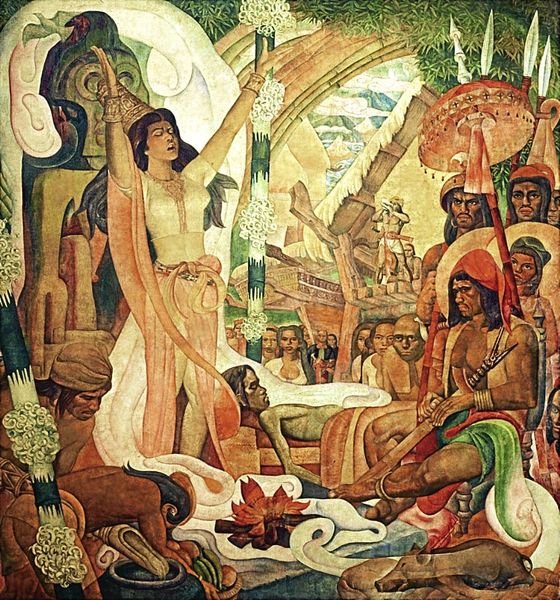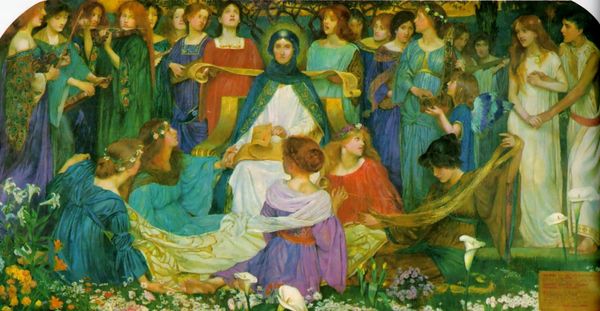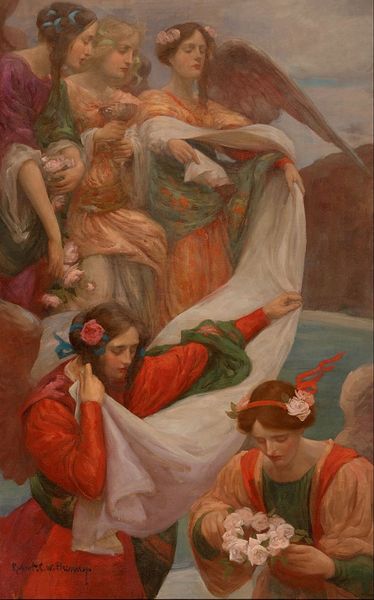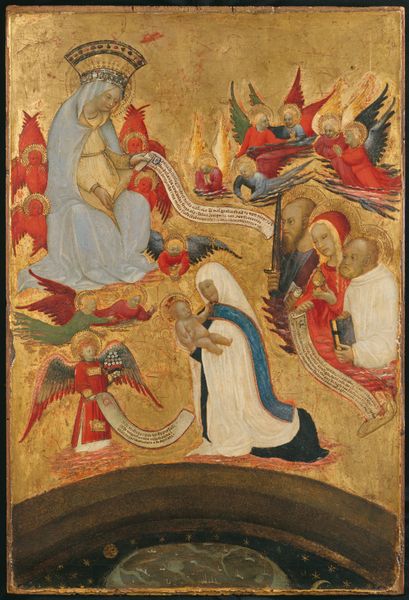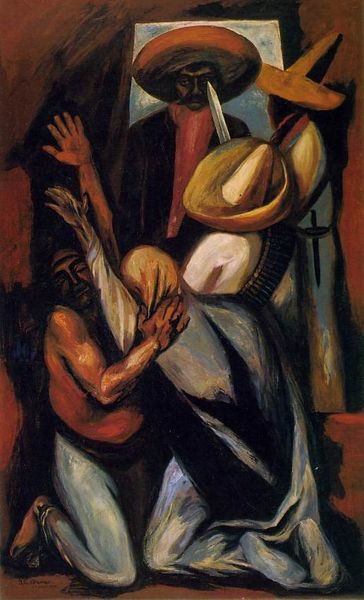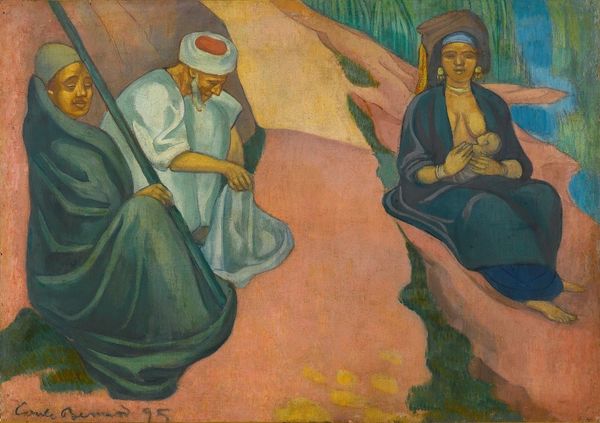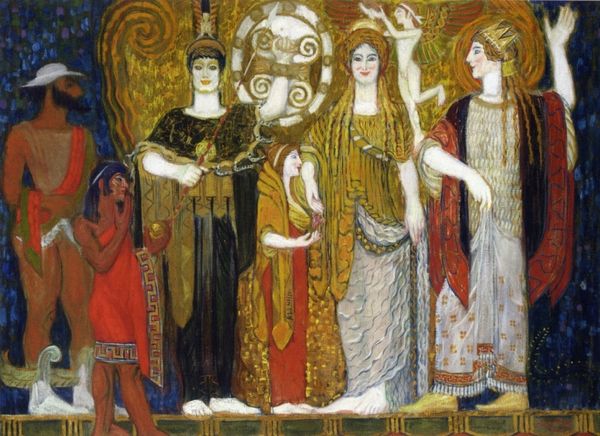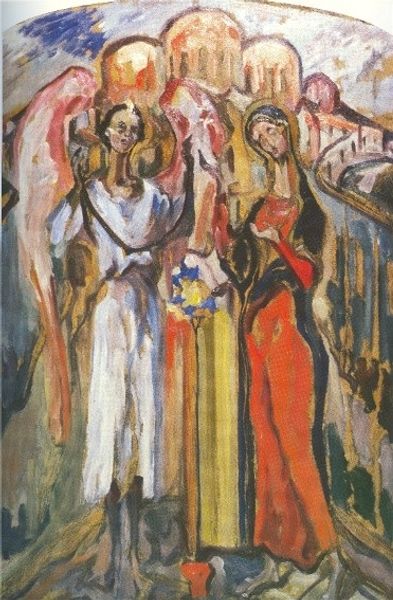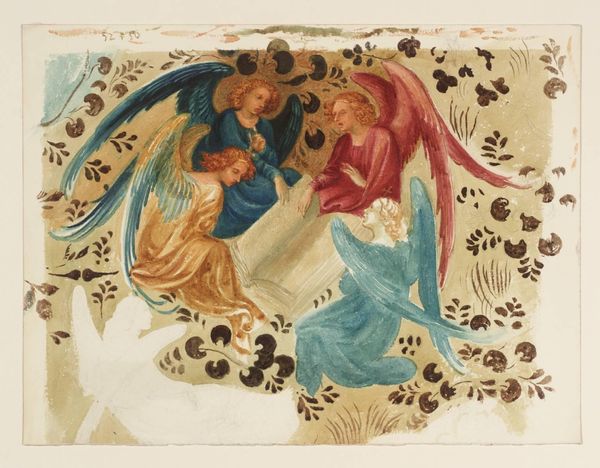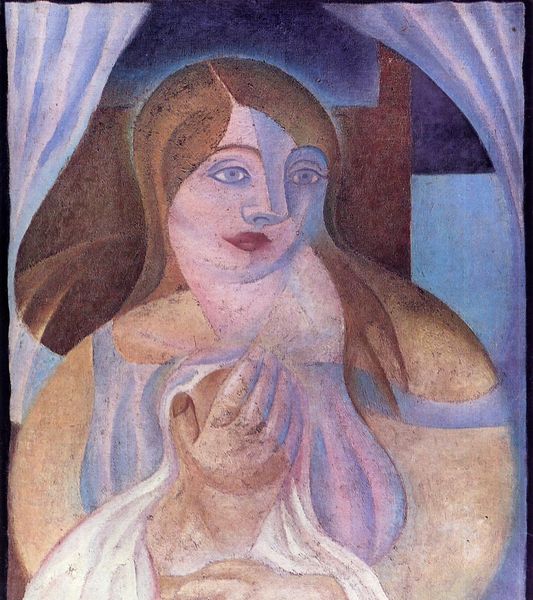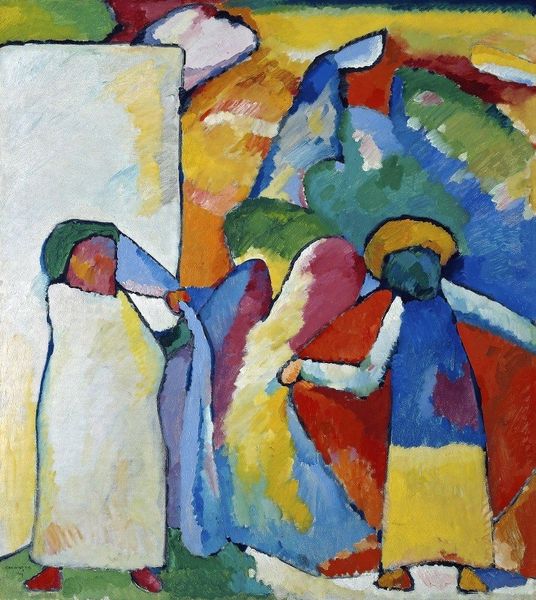
Copyright: Public domain US
Curator: This striking watercolor piece before us is Diego Rivera's "The Adoration of the Virgin," painted in 1913. It currently resides in a private collection. Editor: It’s visually arresting. The earthy tones are immediately comforting, and that central infant figure is ethereal against the strong geometry. Almost feels like a memory, softened and shaped. Curator: Indeed. The artwork blends the narrative art of religious scenes with modern landscape sensibilities. It invites questions about gender and labor within the Mexican muralism movement Rivera would later champion. Note how the central maternal figure has been built through clear visual labor. Editor: That is a crucial point! Observe the basket atop the woman’s head – a potent symbol. Beyond its obvious utilitarian function, it echoes pre-Columbian imagery of sacrifice and abundance. Notice the gaze of the male figure is upward and beseeching. He bears a blanket: A future in potential? Curator: Precisely! We need to unpack how Rivera appropriates European artistic traditions—specifically the Virgin and Child iconography—and filters it through a modern, distinctly Mexican lens. This work foreshadows his commitment to representing the lives and struggles of working-class Mexicans, especially women. Editor: And the colours! A predominantly earth-bound palette suddenly broken open by this triad: red, blue and yellow. These seem to offer something celestial in their intensity but also, considering the social-political context, signal some deeper narrative around revolution and spiritual liberation. Curator: The painting style also contributes to that discourse. The flattening of perspective, the geometric rendering of the figures—these elements reject academic naturalism in favor of a modernist visual language appropriate for a revolutionary age. Editor: Thinking about those geometries as they interact with such a familiar theme as that of Mother and child – one is pushed to recognize archetypal echoes while grappling with their potential for evolution, expansion or transformation! The faces alone prompt a journey into human histories of worship and creativity… Curator: I agree; in that sense, Rivera asks us to reconcile traditional notions of piety with a growing consciousness of social and political realities within early 20th-century Mexico, a theme that only deepens as his practice evolves. Editor: It’s a complex layering – a conversation between devotion and dissent played out in color and form. I see now a deeper appreciation of how history finds a way through each symbol… Curator: And it demonstrates how deeply personal convictions find expression in collective hopes for change and that´s important to keep in mind while viewing art.
Comments
No comments
Be the first to comment and join the conversation on the ultimate creative platform.
